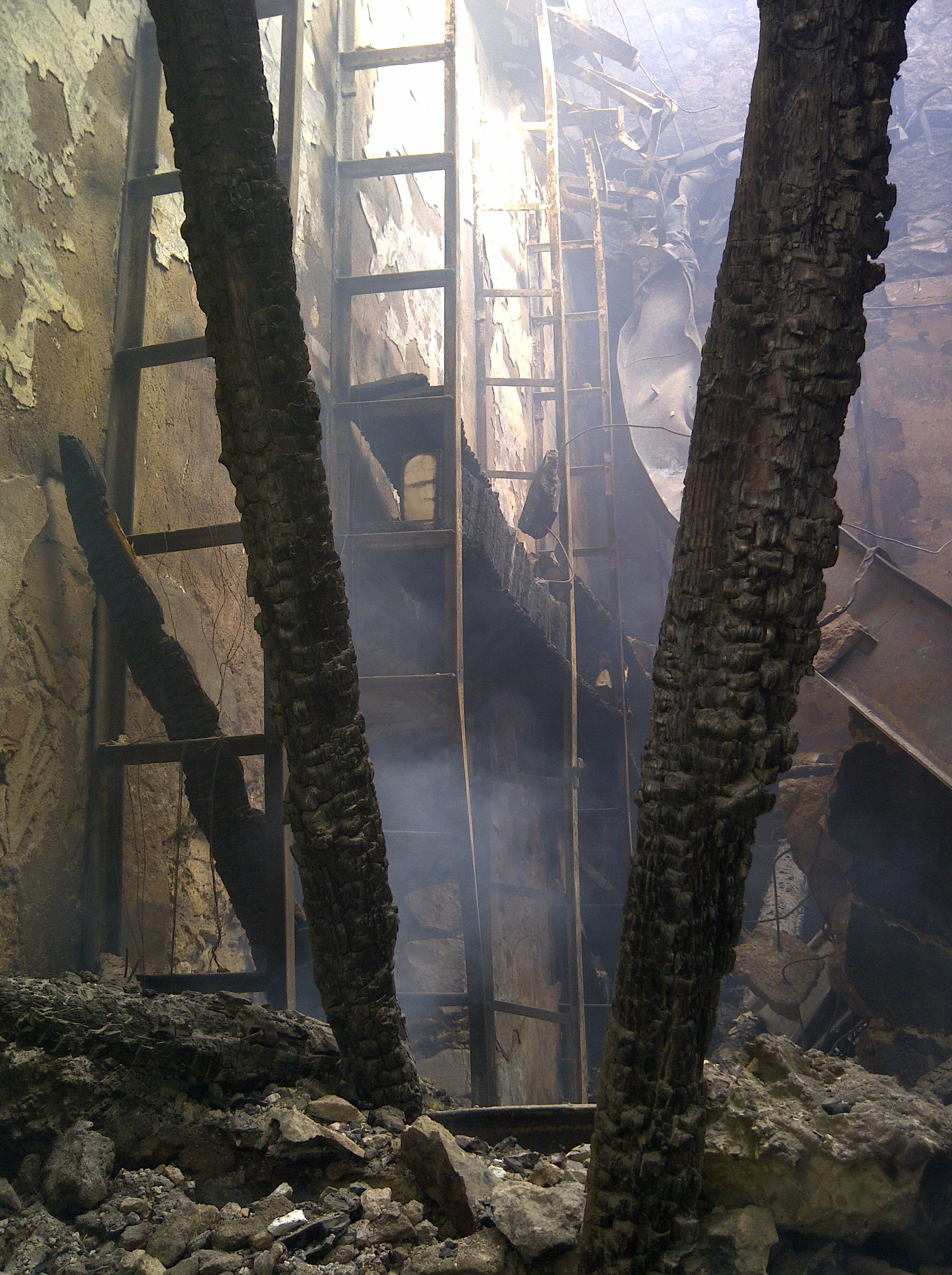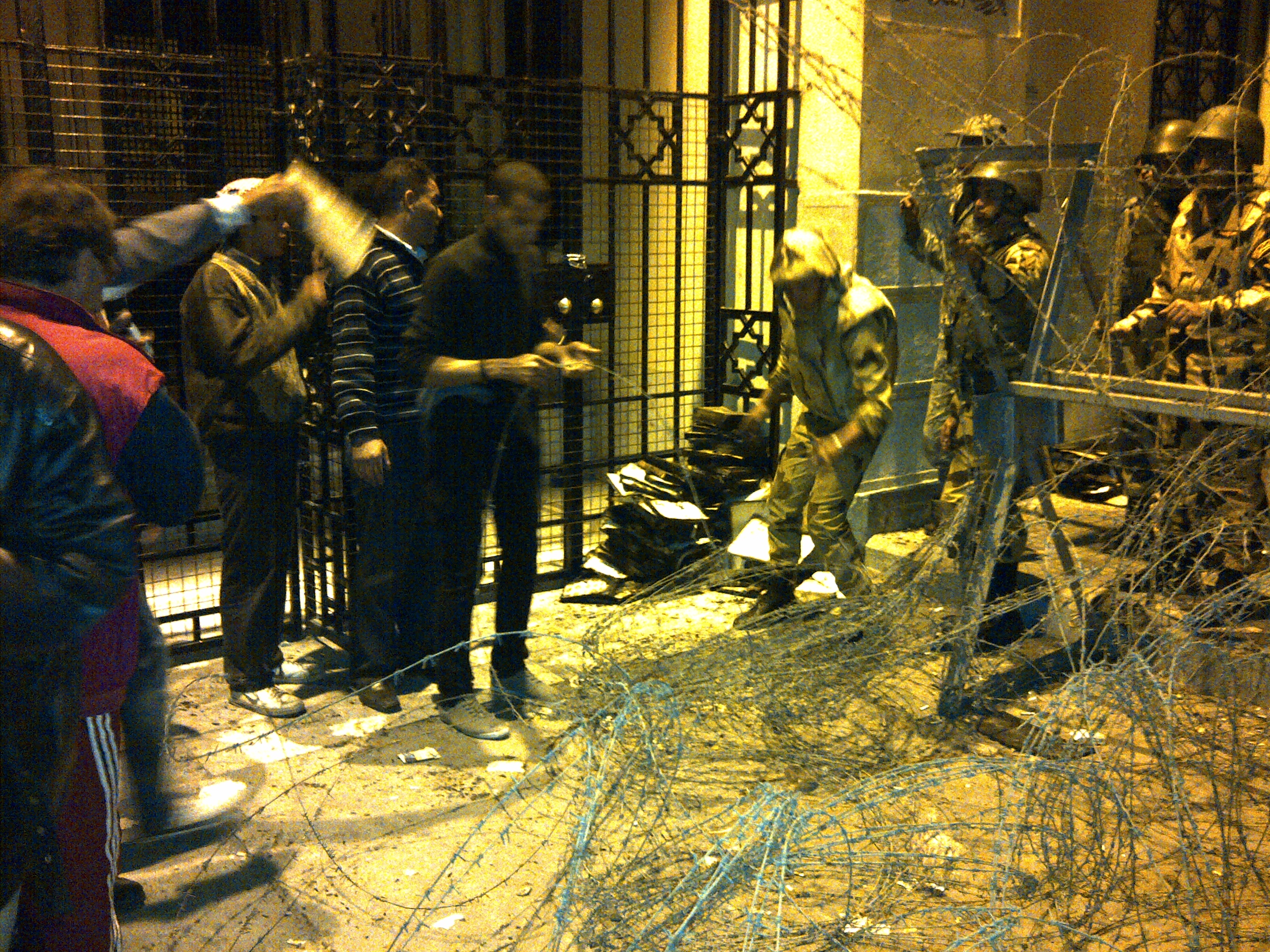Published in Egypt Independent on January 3, 2012
When I heard that the Institut d’Egypte was set on fire on Saturday, 17 December, I did not hesitate to go there and see the tragedy for myself. It was terrible indeed. There were flames of fire coming out from the corners of the collapsing building, the smell of smoke was hovering over the place, heavy and stifling, and demonstrators were shouting slogans against the regime that has not fallen, and against the police and the military council. My phone had not stopped ringing as many of my friends were calling to find out what can be done to save whatever can be saved.
I went back the next day. This time, I entered the building under a hail of stones that the demonstrators and the army were pelting each other with. My friends and I tried to take as many books out as we could. We were afraid the building would collapse over our heads.

However, as was the case the day before, I was surprisingly not concerned with the tragedy, or at least not concerned enough. And soon I came to realize why. For on that Saturday, I went with my friends to the morgue in the Zeinhom district in solidarity with the families of Sheikh Emad Effat and six other martyrs who had been killed the previous night of shots that the army is suspected to be responsible for. There, we heard the testimonies of the families of the martyrs, and their weeping that broke our hearts. Then we went to Al-Azhar mosque to pray for the body of Sheikh Effat, after which we walked in a solemn funeral procession to the family cemetery in the Imam al-Shafei area.

Throughout the funeral, which really turned into a demonstration, people did not stop shouting slogans against the military council and its shameful deeds.
And so when I arrived in Tahrir Square in the evening and saw the fire, the only thing I was thinking was that we have lost what is more valuable than the books of the Institut d’Egypte. Although I specialize in the 19th century history of Egypt, and though I was aware of the importance of the books that were being burned before my eyes, there is nothing more precious than human life, and the lost lives of the martyrs day after day in Tahrir Square are more valuable than those burning books, no matter how rare or expensive they are.
In the following days, my indifference turned into outrage at the mediocre coverage of the official media, which has repeatedly stressed that it was a bunch of “thugs” that set the fire, and claimed there was a plot to burn the whole of Egypt.
I was not there when the fire broke out, and thus cannot say for sure who set it. But I did see for myself the large numbers of young people, whom the military and its loyal media like to call “thugs,” as they ventured to enter the furnace of fire to save the books and hand them over to the military police. If this is the behavior of thugs, I tell them, “Thank you for your heroism, we stand ashamed before your courage.”

Yet my greater anger vis-à-vis the sudden interest in the burning of the institute stems from the fact that we are not addressing the real problem that has led to it. It is not that the building was unequipped with fire-fighting devices, or that the army failed to secure it. The real tragedy is that nobody — not even scholars — knew of its existence in the first place, nor did those who lament the lost manuscripts ever bother to read them.
The real value of a book is not its rarity or high cost, but rather the information it contains. And the significance of a library is not measured by the number or scarcity of its books, but rather by how many read those books. A library that is not frequented by anyone, and that people only notice when it is set ablaze, is worthless.
And what is even worse is that we lament the burnt building and blame the young generations of Egypt for it, while we close an eye to the women who get dragged in the street, the youth who get shot in the eye and the lives that are lost every day.
